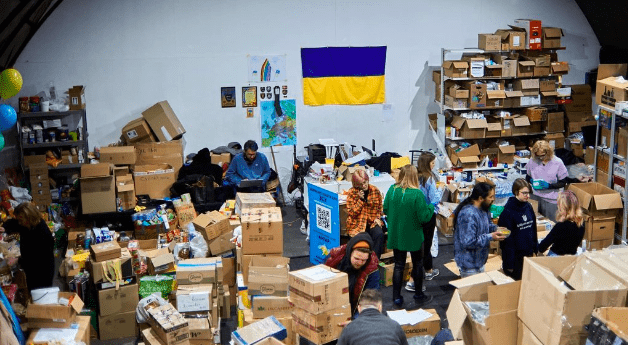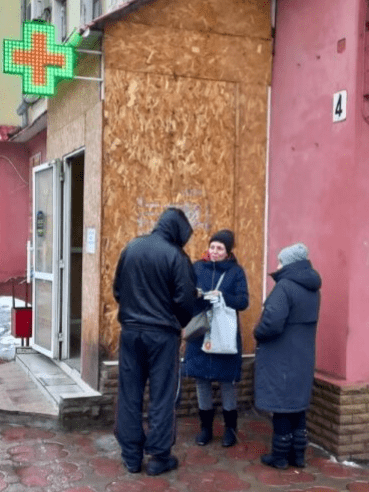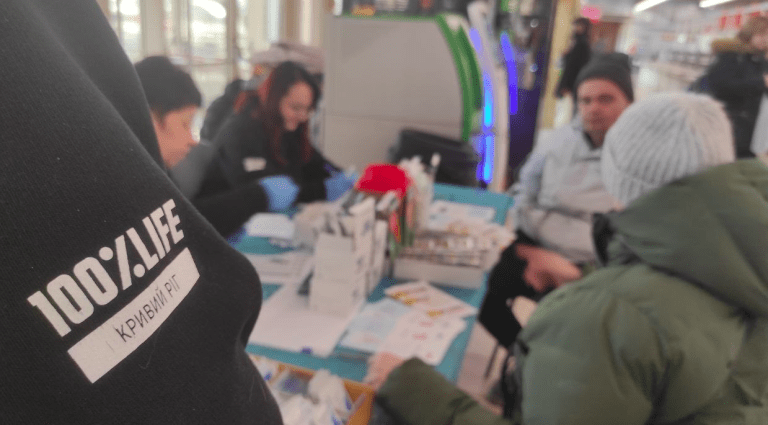Feature
Enhancing outcomes through client-centered services amid war in Ukraine

In February 2022, Russia launched a war against Ukraine that still rages more than two years later. The full-scale invasion has fundamentally changed the lives and priorities of millions of Ukrainians. As we often see in war, individual health takes a backseat to more immediate concerns, such as safety and security. It is no different in Ukraine. Once a top priority of Ukrainians, health has been supplanted by the safety of themselves and their loved ones, donating to Ukraine’s armed forces, volunteering and finding ways to continue making a living amid war.
War is also often devastating to local health care systems. In Ukraine, air raids, shelling, disrupted medical supply chains, thousands of injured soldiers and civilians, and more, further strain the health care system. Additionally, hospitals and other health facilities have been damaged by Russian attacks and bombings. Despite this, people still need regular health care, particularly those with medical conditions or diseases that require regimented, ongoing care and treatment, such as HIV.
As of January 2024, 157,435 Ukrainians living with HIV tested positive and are on treatment. People like Oleksiy* who received a free HIV test from a social worker of PO Ukrainian Resource Center while on an outreach route in the frontline city Druzhkivka. During their conversation, Oleksiy revealed that lately he had symptoms such as tiredness and confusion. His test result was positive, as was his wife’s.
“When we received positive tests, I felt despair, fear, anger, anxiety, and it seemed to me that my life could end at any moment. Now, thanks to the help of a social worker, we have started treatment and have hope for a normal life,” says Maria, Oleksiy’s wife.

However, almost 100,000 people are not aware of their HIV status. Most people living with HIV in Ukraine are representatives of key populations, such as men who have sex with men, sex workers and people who inject drugs. HIV testing in these populations is difficult, requiring a constant search for fresh solutions and innovative approaches. Today, NGOs are finding success using a differentiated approach to service delivery.
Differentiated service delivery
A differentiated service delivery (DSD) approach is client-centered and reflects the client’s preferences and needs. With HIV testing, it allows nongovernmental organizations to choose personalized formats of interaction and consultation for each client. For example, to find a common language with men who have sex with men, social workers provide more online counseling and visit safe spaces identified by the men. For sex workers, social workers meet them in apartments, bars or nightclubs.
The World Health Organization has recommended DSD for HIV services since 2015. Analysis and experience from countries that have implemented DSD as demonstrated by The International AIDS Society shows that this approach may enhance client outcomes, reduce the burden on the health system, improve system effectiveness and refocus resources to those most in need.
For the first time in Ukraine, the Community Action for HIV Control project, funded by USAID and led by Pact together with partners FHI 360 and AFEW-Ukraine, is implementing this approach with 17 partner NGOs in 15 regions of Ukraine and Kyiv city. With technical assistance from FHI 360 we have developed more than 50 DSD models to create “portraits” of key populations and make their path to HIV testing and treatment even easier.
From April 2022 to March 2024, 80,076 people got tested and 1,977 were positive. More than 70% were from key populations. This makes up a 12% contribution to the general HIV case finding in regions where the project is implemented during the second project year.

The first thing that nongovernmental organizations analyze when developing DSD models is the lifestyle of key populations in the region, such as places where they gather or where they can comfortably communicate, convenient times for conversation and format. For example, in regions of Ukraine that are close to the front line, it is more effective to use outreach routes and interact with potential clients at their familiar places — perhaps both for safety reasons and because most clients in the area are people who inject drugs who usually gather at specific locations. In Lviv, which is in the west of Ukraine, clients usually get their HIV test in an NGO office.
Maryna Don, a social worker at Light of Hope, tests for HIV among sex workers she meets on her outreach routes.
“I go on my route around the city in the evening,” said Don. “There is a street I walk back and forth twice a week. I can immediately see if there are any new girls there. There's also a bar on that street where people drink alcohol all the time, and girls often come in. I am always the first to approach them.”
Social workers consider different HIV service delivery options, including testing at NGO offices and at home using different types of HIV test kits, as well as whether a person needs multiple services such as condoms or lubricants, PrEP, sterile needles or referral to medication-assisted treatment.
All this information is compiled into a plan, called the DSD model. The client feels comfortable and safe, as the entire spectrum of HIV services around them is aimed at ensuring that they receive the necessary services in the best way for them: in the right place, at the right time, in the best way.
Alla, who recently joined PO Istok in Zararpattia region, noticed a group of young people hanging out at a bus stop on her way home late one night. She learned they sometimes take drugs, so she talked to them about testing. Fortunately, their tests came back negative. Alla has added many checkpoints to the outreach routes that social workers of the organization usually use, including the final bus stop in a residential neighborhood, a garden cooperative, car service stations on the ring road and tattoo parlors in the city.

The project supports social workers with training on how to interact with clients effectively. Motivational interviewing has been widely used in other countries and is still effective enough to encourage clients to get tested for HIV. The trainings, manuals and guidelines that were developed for social workers are based on international experience and adapted to the Ukrainian experience.
Service delivery during war
War and forced migration have significantly impaired the ability to diagnose and treat HIV, sometimes making it impossible. This has negatively impacted detection of HIV-positive cases. Stigma and discrimination and the destruction of health facilities have also limited access to services.
Andrii* found out about NGO “CO 100% Life Dniprov Region” thanks to a friend who got tested for HIV there. As soon as Andrii arrived at their office, an air alert sounded.
I was very surprised when the staff immediately took me to the backup testing and "invincibility" point, an equipped bomb shelter in the office building,” said Andrii. “A social worker listened to me and offered me an HIV test. It was sad to hear the positive result. However, this level of service and support gave me confidence in my future. I am currently undergoing treatment and know that I will be fine.
As the basic needs of key populations have changed, as have all Ukrainians, NGOs have modified and adapted their work. NGO clients can use their shelter during air raids and rocket attacks, receive humanitarian aid, get information about social and medical services in the city, find psychological and legal assistance and, importantly, access HIV services. During the past year, nearly 70,000 people received social services. As the war continues, so do people’s needs.
Implementing DSD models to reach key and priority populations with HIV testing, prevention and treatment services is an effective and innovative method for identifying new HIV cases among these groups. The principles of the differentiated HIV testing services approach need to be scaled up to increase HIV testing coverage among key populations and to identify other people living with HIV who are unaware of their status.
The realities of the work of NGOs that provide HIV testing services in Ukraine may be different from those of similar organizations in Africa or Latin America. However, the goal remains unified and clear: to end the HIV epidemic. One step at a time, we continued to identify people living with HIV and refer them to treatment to stop the spread of the virus in Ukraine and around the world.
*Name changed for privacy.
We extend a special thanks to the entire Community Action for HIV Control team for writing this article.